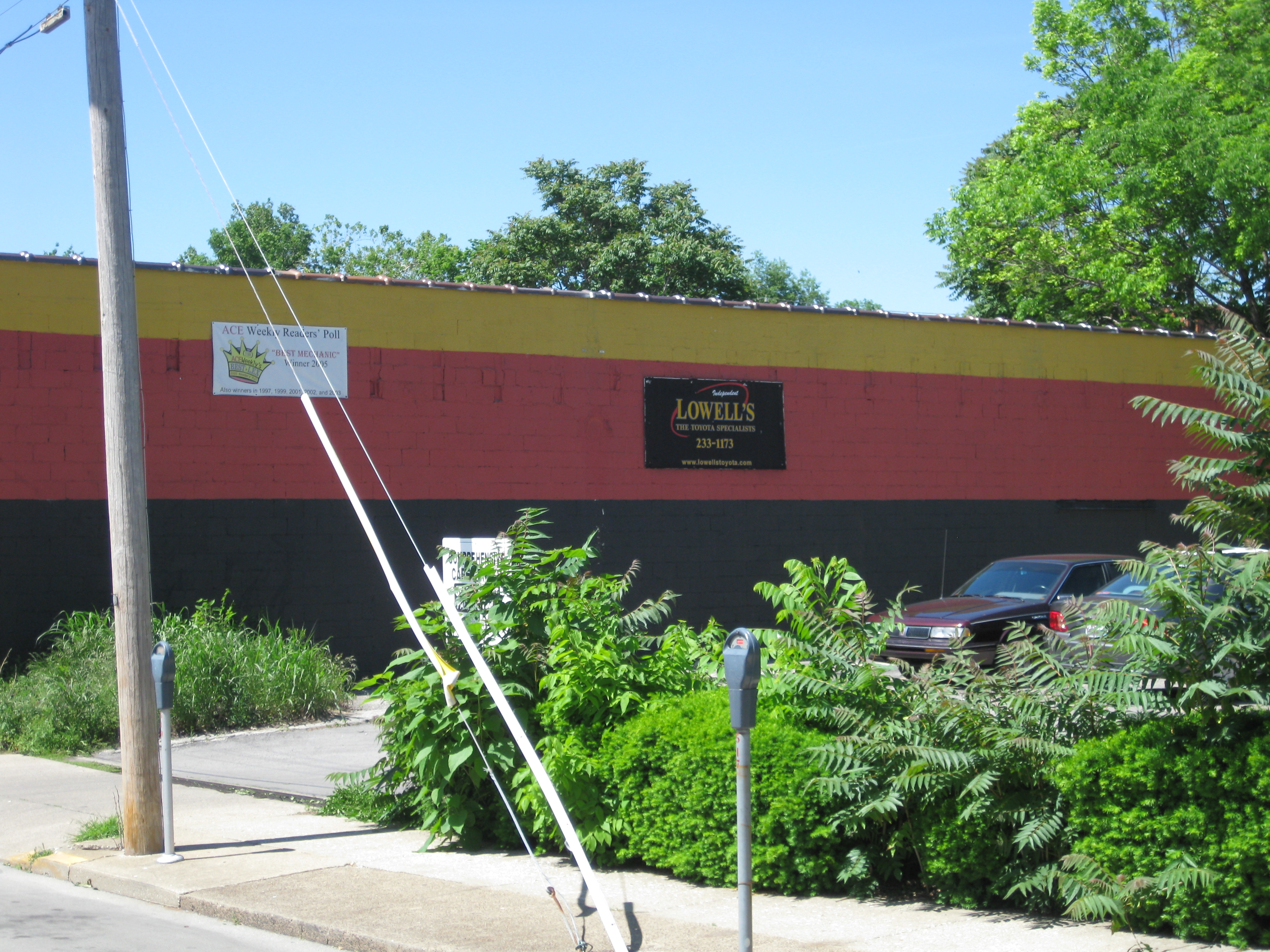“It has taken five years on Council to understand what we can and cannot control.”
Lexington-Fayette Urban County Council Member Kevin Stinnett, 7/2/2009
How do we make Lexington a better city? Really better? I have some ideas, but first we need to understand some of Lexington’s fatal flaws in order to design something better…
A Broken City
As a relative newcomer to the inner machinery of our city (but a lifelong resident), I have spent a few months trying to figure out how Lexington ‘works’. As a downtown business owner, my focus has been on how we craft a functioning, vibrant, and livable city: How do we create a better Lexington? And it has been a maddening exercise. The more I delve into how decisions are made in Lexington – the more I understand what is actually going on – the more perplexed I become. I am forced to conclude that our city is deeply, systemically, and utterly broken.
Lexington is an uncoordinated tangle of overlapping agencies, boards, task forces, committees, departments, rules, and processes. Within this messy system, each organization is charged with its own distinctive – but often overlapping or conflicting – mission, mandate, authority, ability, accountability, and expertise. Some of the organizations consist of long-term government administrators, some of elected officials, some of volunteers, others are quasi-governmental public/private agencies, and still others are fusions of all of these.
This highly fragmented machinery yields a city which fosters turf battles, redundant effort, convoluted processes, secrecy, uncertainty, and, as we have seen most recently, corruption.
The ultimate result is a profoundly inefficient city with an effectively paralyzed government.
Scandalous
Lately, our local news has been rife with scandals and poorly-conceived,
-designed, and -executed projects:
- Out of control spending sprees at the Airport, the Library, the Kentucky League of Cities, and the Kentucky Association of Counties.
- The scar of CentrePointe’s failure with its phantom financier, phantom tower, phantom business model, and phantom jobs.
- The seemingly hasty and disorganized pending closure of South Limestone.
All of these scandals fit a disturbingly regular pattern: Inadequate oversight which leads to lax controls which permits gross mismanagement and/or outright waste of taxpayer dollars.
Behind this pattern of scandal and appalling inefficiency lies Lexington’s deeply flawed governing apparatus. And when we observe that apparatus in action, we can begin to understand the root of the scandals.
Laurel and Hardy
Many Urban County Council meetings bear an astounding and troubling resemblance to a Laurel and Hardy “Who’s on First?” sketch. A prime example of this was last Thursday’s Economic
Development Task Force meeting (See Ace Weekly’s wonderful reality-show spoof here for further examples). A central question of last week’s meeting was “Who is (really) responsible for economic development in Lexington?”
At the outset, one councilmember stated, “It has taken five years on Council to understand what we can and cannot control.” Re-read that statement, because it is a profound indictment of our city’s overcomplicated decisionmaking infrastructure. Five years. It takes five years for a councilmember to “get it” when they are steeped in it day-to-day? How long will it take for an ordinary citizen?
And by the way, despite the councilmember’s assertion, I don’t think the Council yet understands what they can and cannot control, as the ensuing conversation demonstrated.
The Task Force (Consisting of Urban County Council members) debated the Council’s role in economic development relative to Commerce Lexington (“CLex”, Lexington’s semi-private chamber of commerce) and the Downtown Development Authority (“DDA”, a corporation commissioned by the city and charged with helping redevelop downtown). Both CLex and DDA have a board of directors and a staff of professionals.
What emerged from the discussion (chronicled best by Debbie Hildreth on her new blog about acclimating back to Lexington) is that the councilmembers have little clarity and little agreement on the respective roles, responsibilities, plans, and accountability of the Council, CLex, DDA, and the CLex and DDA boards. Reading through Debbie’s transcript, the councilmembers’ statements are filled with stale bromides, helpless complaints, quick answers and utter confusion. It all becomes tragically comic when you see how our elected officials are not even remotely on the same page.
And it is no wonder that our Council is befuddled. The situation is actually far more complicated than just the Council, CLex, and DDA. Within the Council itself, there are a bewildering array of committees and task forces, all of which could lay legitimate claim to economic development. There is, of course, the Economic Development Task Force. But there is also the Infill and Redevelopment Task Force. There is the Planning Committee. But there is also the Budget and Finance Committee. And the Outside Agency Oversight Committee. And the Corridors Committee. (But wait, there’s more!) There are staff professionals within Lexington’s Division of Planning. There are volunteers who serve on the Planning Commission. And with CentrePointe, there is the Courthouse Area Design Review Board, which issues the building permits for the site.
Within this ridiculous balkanization of our government, who has the jurisdiction, the responsibility, and the accountability for building a better Lexington? Everyone and no one at once. And therein lies the problem.
All of these organizations can claim they spearhead Lexington’s development into a better city. All of them “own” a piece. But ultimately, none appear truly accountable for actual on-the-ground progress.
The Lyric
With a noble project like the restoration of the Lyric Theater, who is in charge? Who takes the lead on coordinating and executing the Lyric’s redevelopment?
The Lyric could plausibly fall under the auspices of the DDA. Or CLex. Or the Infill and Redevelopment Task Force. Or the Economic Development Task Force. Or the Planning Commission. Or, even, the Corridors Committee. Ultimately, though, responsibility fell to another shard in the splintered machine: the Lyric Theater Task Force (who, by the way, appeared to do a great job).
And while the Lyric task force optimized the project for the theater’s redevelopment, it isn’t at all clear where this project falls within the wide array of potential development opportunities in our city. It isn’t clear how the Lyric was connected to our other urban initiatives. In a fiscally-strapped economic environment, was the Lyric the best possible allocation of public funds? We can’t really tell, because we haven’t really prioritized such development projects by return on our public investment.
Destination 2040: Destined to Fail
Some councilmembers have pointed to the Destination 2040 report as a roadmap for Lexington to follow in its development endeavors. Destination 2040 is an admirable vision of the future constructed by our citizens. It is filled with interesting ideas and initiatives to help improve our city. But it is most certainly not a roadmap.
Destination 2040 lacks clear prioritization of the initiatives it proposes. It fails to identify adequate operational details of how to fund, structure, and execute the components of the Destination 2040 vision. And, most of all, it fails to address the profound structural inefficiencies within Lexington which have long hampered such well-intentioned visions.
::
Toward a Better Lexington
What kinds of structural changes are needed in Lexington? I have a few ideas. I hope that you will add more.
Transparency
When I began to look at how our city works, I quickly joined the chorus of advocates for greater transparency in how decisions get made in Lexington and throughout Kentucky.
And that advocacy has begun to pay dividends (whether the results of our actions or not). As local officials take their first baby steps on Twitter, and as more of our citizens engage in local decisionmaking through attending meetings in person, watching them on public access television (GTV3), or following vibrant discussions on Twitter, one fact has become abundantly clear to me: Transparency is not enough. Not nearly enough.
While transparency has helped reveal the scandals and issues facing our city, transparency alone won’t really solve them. Don’t get me wrong – we’re now starting to see into the machine. It’s just that we’re learning that the machine is completely dysfunctional.
Comprehensive Urban Development
Whatever ‘system’ we have in place today, it isn’t one which promotes sustained urban development. I use the term urban development purposefully here: It is more than mere city planning; It is more than simply promoting our city; It is more than just economic development. Urban development looks at our city as a functioning engine of economic and social progress, and strategically deploys our city’s ‘fabric’ – spaces, corridors, amenities, people, businesses, buildings – to maximize sustainable advancement in our economy, in our social lives, in our physical environment, and in our aesthetic surroundings.
In short, it looks at how we intentionally design a better-functioning, vibrant, and livable city.
Simplification
It is clear that the splintered approach to bettering our city is failing. Our continuous scandals and perpetual lack of progress cement that conclusion, as does the bewildering overlap of dozens of separate well-intentioned but poorly-conceived organizations.
My proposal: Eliminate today’s governmental tangle by collapsing the DDA, Planning Commission, the Division of Planning, and the LFUCG Economic Development Office (for starters) into a single, centralized, and well-staffed organization with the clear mandate, clear authority, and clear accountability for successfully implementing our city’s urban development initiatives.
Focus
Concentrating urban development authority in a single organization will only work if we provide them with crystal-clear priorities on what is important. With dozens of possible initiatives, visions like the Destination 2040 report lack clear priorities. In essence, it declares that everything is important. And in trying to do everything, we’d fail to accomplish anything.
We need to provide such an organization with guiding principles on what’s important (and what isn’t). Is the organization designed to maximize tax revenue, jobs, infill, downtown density, or something else?
From out of these principles, we should set realistic and quantifiable goals: “3000 new jobs by the end of 2010”; “$30 million in new tax revenues by 2012”; “10% higher residential density in downtown by 2014”; etc.
My initial thoughts are that the core principles and the goals attached to them should be outlined by the Urban County Council. That said, I’d like to see a way to balance continuity and change: As a city, we probably don’t want long-term initiatives derailed by short-term political changes. But we also don’t want to ‘lock in’ failing projects merely for the sake of continuity.
From these principles and goals, staff professionals should derive the best 4 or 5 initiatives for achieving the established goals. Would the Lyric Theater have emerged as one of the 4 or 5 best possible urban development projects? I don’t know, but I have my doubts. It doesn’t appear to scale very well on “jobs” or “revenues” dimensions. But, of course, neither does CentrePointe at present. Would we risk destroying surrounding businesses to “beautify” South Limestone’s streetscapes? I don’t know, but I have my doubts.
Accountability
When the Economic Development Task Force met last week, councilmembers bemoaned the $400,000 provided to Commerce Lexington to bring new business to the area. To date, there’s little proof that this ‘investment’ has paid dividends. How much business? How many jobs? What new tax revenue? CLex really isn’t accountable to the Council, so there’s no real penalty for not delivering. Where’d the $400,000 go? The Council would like to know, too…
When we make the transformation to a simplified and focused urban development authority, we must have accountability for progress on these development initiatives. Do they adhere to our principles? Are they meeting our goals? Are they successful? If so, who gets rewarded? If not, who gets fired?
::
Do I expect my proposed system to be adopted? Not really. But I would like for our leaders to begin to discuss seriously reforming how our city’s decisionmaking machinery functions. And the system which emerges must be more transparent, more simplified, more focused, and more accountable. It must help us build a better Lexington.






